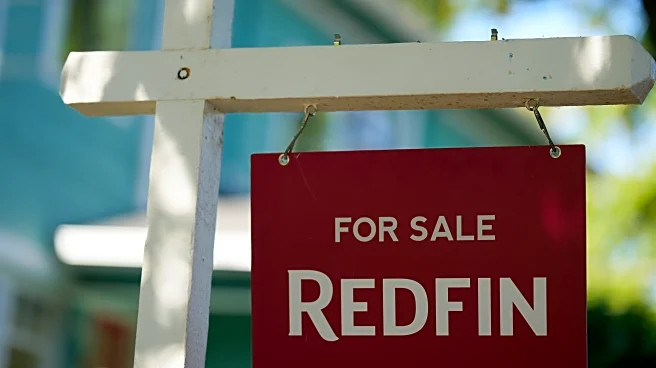What's Happening?
The average rate on a 30-year U.S. mortgage has decreased to 6.58%, marking the lowest level in nearly 10 months, according to Freddie Mac. This decline from last week's rate of 6.63% offers potential homebuyers increased purchasing power, potentially revitalizing the stagnant housing market. The rate for 15-year fixed-rate mortgages also fell slightly, from 5.75% to 5.71%. Mortgage rates are influenced by various factors, including the Federal Reserve's interest rate policies and the 10-year Treasury yield, which was at 4.28% at the close of trading. The recent drop in rates has led to a surge in refinancing applications, with homeowners seeking to capitalize on the lower rates.
Why It's Important?
The reduction in mortgage rates is significant for the U.S. housing market, which has been in a slump due to elevated borrowing costs. Lower rates could encourage more homebuyers to enter the market, potentially increasing home sales and stimulating economic activity. However, affordability remains a challenge, as home prices continue to rise, with the median sales price reaching an all-time high. The decrease in rates has also prompted a rise in refinancing applications, indicating that homeowners are eager to take advantage of the lower costs. This trend could lead to increased consumer spending as homeowners free up cash through refinancing.
What's Next?
Economists predict that the average rate on a 30-year mortgage will remain above 6% throughout the year, with forecasts suggesting a slight easing to around 6.4% by year-end. The Federal Reserve's upcoming decisions on interest rates could further influence mortgage rates. If the Fed opts to cut rates, it may boost the job market and economy but could also lead to higher inflation, affecting bond yields and mortgage rates. Homebuyers and homeowners will be closely monitoring these developments to make informed decisions about purchasing or refinancing.
Beyond the Headlines
The broader economic implications of fluctuating mortgage rates include potential shifts in consumer behavior and housing market dynamics. As rates decrease, more homeowners may opt for cash-out refinancing, tapping into home equity for additional financial flexibility. This could lead to increased consumer spending, impacting various sectors of the economy. Additionally, the interplay between mortgage rates, inflation, and Federal Reserve policies highlights the complex nature of economic forecasting and decision-making.












